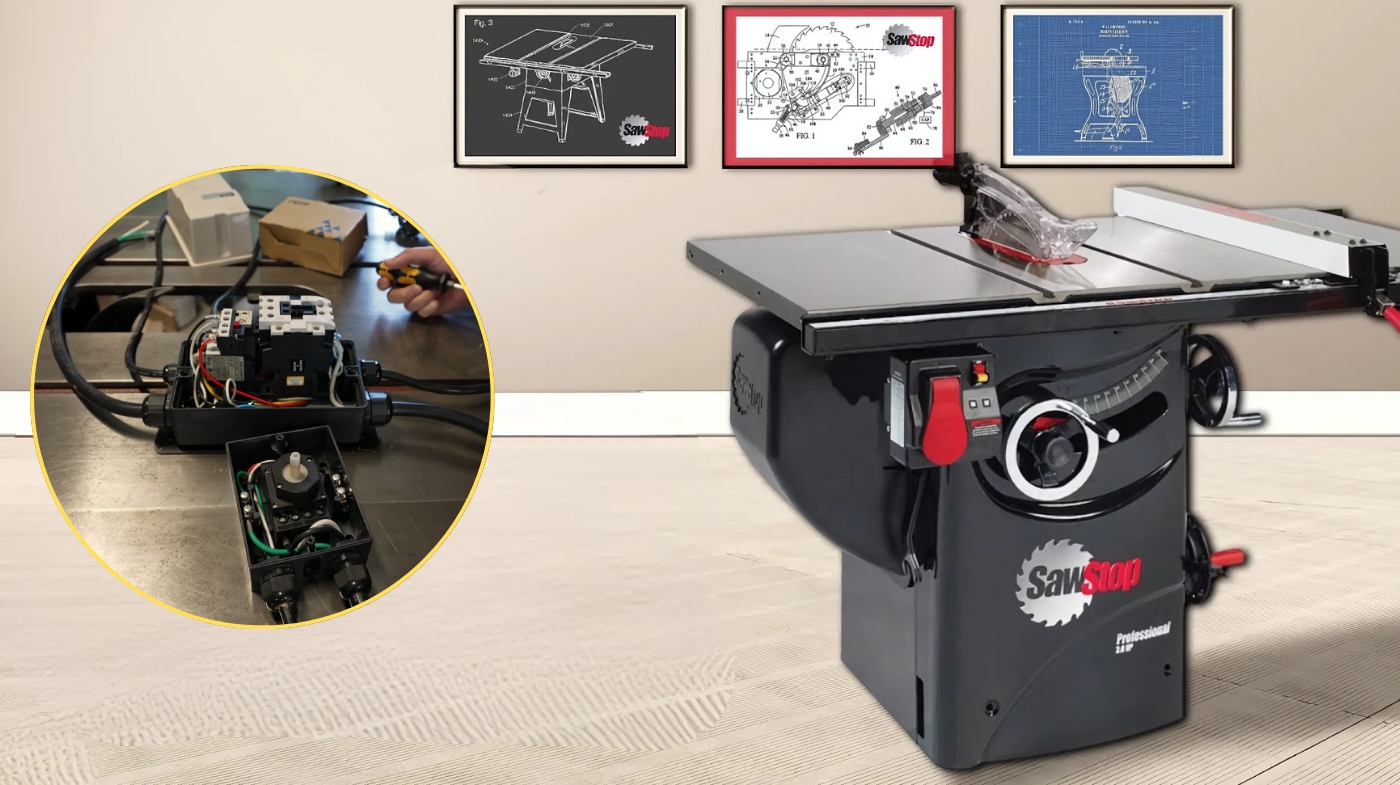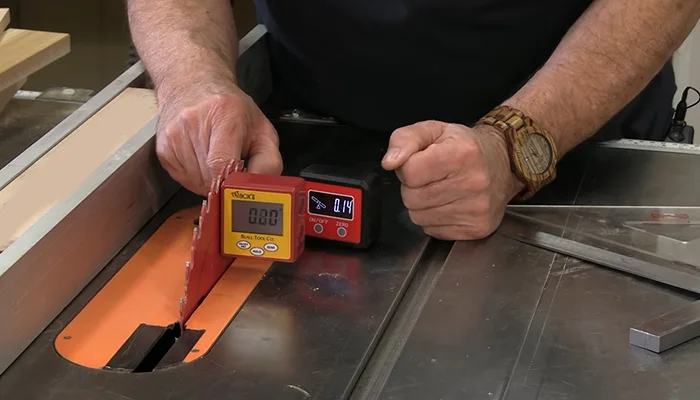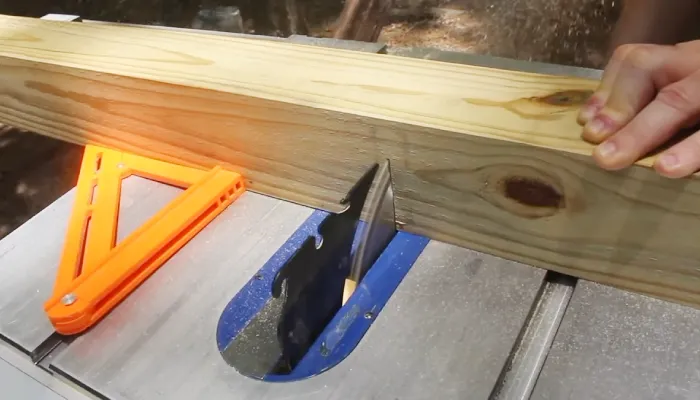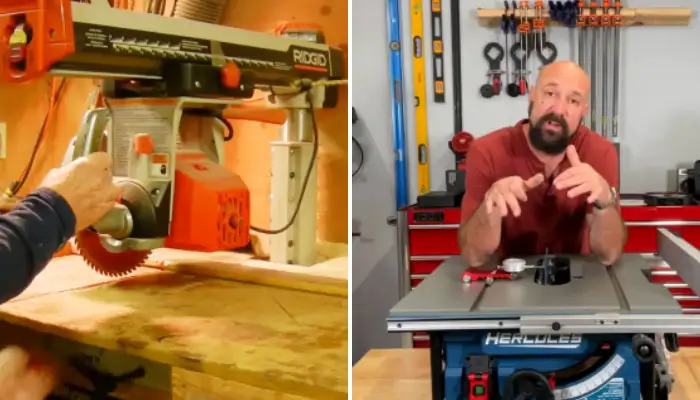Can you use a phase converter on a SawStop? A Guide
Using a phase converter on a SawStop is possible if the converter matches the saw’s electrical specifications and horsepower.
You must select a converter type—rotary or static—that can handle the load without compromising performance or safety.
Proper wiring, grounding, and capacity are critical, and professional installation is recommended to guarantee compatibility and compliance.
To guarantee reliable operation and safety, understanding the precise requirements and installation process is essential; further details can guide you through proper setup.
Key Takeaways
- Yes, a phase converter can power a Sawstop if it matches the saw’s electrical specifications (voltage, phase, horsepower).
- Rotary phase converters are preferred for heavy-duty Sawstop models due to stable, true three-phase power.
- Ensure the converter’s capacity is at least twice the motor’s horsepower (around 10hp for a 5hp saw).
- Proper installation, grounding, and wiring by a qualified electrician are essential for safety and performance.
- Regular system checks and maintenance help ensure safe, reliable operation when using a phase converter with a Sawstop.
Compatibility of Sawstop With Phase Converters
Understanding the compatibility of Sawstop with phase converters is essential to guarantee safe and reliable operation.
Sawstop machines are designed for specific electrical inputs, either single-phase or three-phase, requiring careful assessment when introducing a phase converter.
A compatible converter should provide stable, balanced power to prevent disruptions. Using an unapproved converter risks interference with built-in safety features, such as flesh detection and blade guard systems, potentially compromising their effectiveness.
Compatibility depends on the motor type and electrical specifications; not all phase converters provide the stable power quality needed for Sawstop’s sensitive electronics. Proper grounding and electrical noise mitigation are critical to prevent safety system malfunctions.
Additionally, thorough testing is necessary to verify that the converter maintains system integrity without impairing safety functions or causing operational inefficiencies. Electrical compatibility is fundamental before integrating any phase conversion solution.
Types of Phase Converters Suitable for Sawstop Machines
When selecting a phase converter for your Sawstop, it’s essential to compare rotary and static models based on their ability to provide consistent, balanced power.
Compatibility with Sawstop’s sensitive electronics depends on the converter’s power capacity and voltage stability, especially for continuous operation.
Ensuring the right type and capacity aligns with your machine’s specifications minimizes performance issues and safeguards safety features.
Digital phase converters produce cleaner power and more stable sine waves, which are crucial for the precise operation of Sawstop systems.
Rotary Vs Static Converters
Choosing the appropriate phase converter for your Sawstop machine depends on your specific power requirements and operational demands.
Rotary phase converters deliver continuous, true three-phase power through an idler motor, making them ideal for large, heavy-load equipment like Sawstop tablesaws.
They support multiple machines simultaneously and handle high power levels effectively. However, they are more costly and require more maintenance due to mechanical parts.
They also provide balanced power output, ensuring consistent performance for precision woodworking tasks. Additionally, rotary converters can accommodate variable load demands, which makes them suitable for diverse workshop setups.
Static phase converters, by contrast, use electronic components such as capacitors and resistors to simulate three-phase power. They’re more affordable, simpler to install, and better suited for smaller, lower horsepower machines.
However, they may struggle with larger Sawstop models, providing limited power and potentially affecting performance under heavy loads. Your choice hinges on load size, budget, and operational complexity.
Compatibility With Sawstop Electronics
Selecting a phase converter compatible with SawStop electronics requires careful consideration of the type and quality of power it supplies, as not all converters suit modern safety and control systems.
Rotary and VFD-based converters can sometimes be used, but their impact on SawStop’s electronics varies.
Ensuring compatibility involves evaluating the converter’s ability to accurately simulate three-phase power without introducing voltage fluctuations or electrical noise that could compromise safety features. Additional components such as starters or control boxes may be necessary. Consider this compatibility:
| Converter Type | Suitability for SawStop Electronics |
|---|---|
| Rotary Phase Converter | Generally reliable; needs testing for safety compatibility |
| VFD-Based Systems | Potentially suitable but requires precise setup and verification |
| Static Phase Converter | Risky with modern electronics; not recommended |
Proper assessment prevents performance issues and safety risks. Testing the converter’s output for stability is essential to ensure it does not interfere with SawStop’s sensitive electronics.
For optimal safety and performance, consulting with an electrician experienced in phase conversion and SawStop systems is highly recommended.
Power Capacity Requirements
Understanding the power capacity requirements of phase converters is vital to guarantee your SawStop machine operates reliably and safely.
Rotary phase converters offer full 100% power capacity and are well-suited for high-demand SawStop models, ensuring consistent operation without loss.
Efficiency is a key factor, and choosing the right converter can significantly impact overall performance. Static converters typically deliver between 60% and 80% of their rated capacity, which may be insufficient for continuous use with heavy machinery.
For motor startup, size the phase converter at least twice the horsepower of the largest motor to handle initial loads effectively. Confirm the converter’s operational load capacity aligns with your equipment’s total running load to prevent overloads.
Additionally, considering power factor correction can improve the efficiency and stability of your setup.
Assessing Power Requirements for Sawstop and Phase Converters
To guarantee proper operation, you need to match your SawStop’s power requirements with the phase converter’s capacity, considering voltage and phase compatibility.
Confirm that the converter can supply sufficient current without exceeding the saw’s startup surge limits. Proper assessment of these factors prevents overloads and maintains safe, efficient performance.
Additionally, verifying the circular saw features ensures the converter can handle the specific power demands of your model.
Sawstop Power Needs
Evaluating the power requirements for a SawStop saw involves determining its voltage, current draw, and startup surge to guarantee proper electrical supply and safe operation.
A 3 HP SawStop Professional Cabinet Saw typically operates at 220V, drawing about 13 amps under load. The motor’s power equates to roughly 2,235 watts, with startup surge increasing current temporarily.
Because of this, understanding the power demand during startup is crucial for avoiding overloads. Circuit capacity should accommodate this surge, with a recommended breaker size 5-10 amps above the running load.
Wiring must support the load; using 10-gauge wire rated for 30 amps allows for safe loading up to 24 amps per the 80% rule.
Proper circuit and wiring sizing ensures a dedicated circuit and professional installation aligns with safety standards and local electrical codes, preventing overloads and ensuring reliable operation.
Converter Capacity Match
Matching the capacity of your phase converter to the power requirements of your SawStop guarantees reliable operation and safety. To do this, you must accurately assess the saw’s motor horsepower, typically around 5hp, and select a converter rated for at least that load.
Ensuring the converter has sufficient capacity is essential to handle startup surges and prevent overloads. Proper sizing prevents overheating, reduces power loss, and ensures consistent performance.
Consider whether you’ll use the converter continuously or intermittently, as this influences the appropriate capacity and type—rotary converters are preferable for continuous use, while static models suit intermittent tasks.
Accurate capacity matching minimizes the risk of malfunction, electrical noise, and safety system interference.
Always verify the converter’s specifications align with the saw’s startup and running current needs, maintaining proper safety margins for reliable, safe operation.
Additionally, understanding the power conversion process helps in selecting the most suitable converter for your specific saw model and usage requirements.
Voltage and Phase Compatibility
How do you verify your SawStop’s voltage and phase requirements align with your power source? First, identify your saw’s voltage option—115V or 220-240V—and confirm whether it’s pre-wired or re-wirable.
Next, check if your power supply matches these specifications. Use the table below to compare your saw’s needs with your available power:
| SawStop Voltage | Power Source Voltage | Compatibility |
|---|---|---|
| 115V | 115V | Compatible |
| 115V | 220-240V | Not compatible |
| 220-240V | 208V | Usually compatible |
| 220-240V | 115V | Not compatible |
| 220-240V | 220-240V | Compatible |
Ensure your phase matches—single-phase for standard operation—and verify the converter output aligns to prevent equipment damage.
Additionally, always consult your saw’s user manual or a licensed electrician to confirm compatibility and proper setup, as power requirements can vary depending on the specific model.
To ensure safe operation, consider the phase converter’s capacity and whether it can handle the saw’s startup current.
Technical Challenges in Using Phase Converters With Sawstop
Using phase converters with Sawstop introduces several technical challenges that can compromise both performance and safety.
Compatibility issues may arise because phase converters often lack the precise control needed for Sawstop’s advanced electronics, risking malfunction. Inadequate power quality can lead to unstable operation and potential damage to sensitive components.
Power output limitations can restrict high-horsepower operations, leading to reduced cutting capacity. Voltage fluctuations caused by phase converters can impair motor startup and cause long-term damage to sensitive components.
Electrical noise generated during conversion can interfere with Sawstop’s electronic controls, risking false triggers or system faults. Additionally, the increased complexity and cost of installation demand careful wiring modifications, transformer requirements, and ongoing maintenance.
Heat generation and system harmonics further threaten reliability, potentially reducing the lifespan of components and increasing downtime.
These challenges require thorough evaluation before integrating a phase converter with your Sawstop, especially considering the importance of electrical noise management for sensitive machinery.
Safety Considerations When Operating Sawstop With a Phase Converter
Ensuring safety when operating a SawStop with a phase converter requires diligent attention to both the equipment and the environment.
Verify that the safety system functions correctly before use, and regularly inspect electrical connections for wear or damage. Using a Rotary Phase Converter (RPC) that supplies full power ensures optimal performance and safety features.
Proper grounding is essential to prevent electrical shocks, and the saw must be placed on a stable, level surface to avoid instability during operation.
Use only a phase converter rated for the motor’s power to prevent overheating or failure, and install it in a well-ventilated area. Follow the manufacturer’s instructions for installation and maintenance, and monitor the phase converter’s performance to ensure it doesn’t compromise safety features.
Adhering to electrical standards and conducting routine inspections reduces risks and maintains a safe operational environment.
Alternative Solutions to Using a Phase Converter With Sawstop
When considering alternatives to a phase converter for your SawStop, replacing the motor with a compatible single-phase model offers a straightforward solution that eliminates the need for additional power conversion equipment. This approach guarantees compatibility with your existing electrical system while maintaining the saw’s safety features.
Alternatively, purchasing a SawStop designed for single-phase power directly removes the complexity of motor swaps or converters.
Installing a three-phase transformer is another option, providing a direct power source without conversion devices, though it may involve higher initial costs.
Each solution requires careful assessment of electrical compatibility, safety feature integrity, and proper installation procedures.
Steps to Properly Set Up a Phase Converter for Your Sawstop
To properly set up a phase converter for your SawStop, start by verifying that the converter matches the saw’s electrical specifications, including power rating, voltage, and phase requirements.
Confirm compatibility is critical to maintain safety features and prevent motor issues. Ensuring compatibility helps avoid potential damage to the saw’s sensitive electronics and safety mechanisms. Follow these steps:
- Confirm the phase converter can handle the saw’s power load and supports the necessary voltage (e.g., 220V) and phase configuration (single- or three-phase).
- Mount the converter securely, minimizing vibration and electrical noise interference.
- Connect the converter to the saw according to manufacturer instructions, ensuring proper wiring, grounding, and safety connectors.
Test the system thoroughly before operation, checking for stable power output, smooth motor performance, and safety feature integrity. Regular maintenance ensures continued reliability.
Frequently Asked Questions
Can a Static Phase Converter Handle Startup Surges of Sawstop?
A static phase converter typically can’t handle the startup surges of a SawStop industrial saw efficiently. These converters deliver limited power during startup, risking insufficient torque and potential motor stalls.
Heavy machinery like SawStop requires stable, high starting torque, which static converters usually don’t provide. For reliable operation, a rotary phase converter is recommended, as it better manages startup surges and delivers full power during initial motor engagement.
How Does Phase Converter Noise Affect Sawstop Operation?
The noise from a phase converter can impact your Sawstop’s operation, mainly by causing distractions or signaling potential issues with the system. Typically, noise levels around 43 dB are manageable.
However, excessive or irregular noise may indicate improper sizing or maintenance problems that could affect performance. To ensure ideal operation, keep the converter well-maintained, use quality components, and monitor noise levels.
Are There Specific Brand Recommendations for Sawstop-Compatible Phase Converters?
The question about brand recommendations for SawStop-compatible phase converters is like searching for a needle in a haystack. You need a converter that seamlessly harmonizes with SawStop’s sophisticated electronics, ensuring power stability without interference.
While no specific brands are universally endorsed, you should prioritize reputable manufacturers known for high-quality, industrial-grade converters. Always verify compatibility directly with SawStop to prevent voiding warranties and to maintain ideal safety and performance.
What Are the Long-Term Effects of Phase Converter Use on Sawstop’s Electronics?
Using a phase converter on your Sawstop can cause long-term issues by creating phase imbalance, which strains the motor and can lead to overheating.
It may also impact the precise electronics and safety features, potentially causing malfunction or voiding warranties. Regular monitoring is essential to detect efficiency declines or electrical irregularities.
For reliable operation, consider consulting Sawstop directly or exploring alternatives like VFDs or dedicated single-phase motors.
Weigh the Risks and Benefits of Using a Phase Converter on a SawStop
While a phase converter can provide the necessary power for your SawStop, technical complexities and safety concerns make it a challenging solution.
On one hand, it offers a cost-effective way to run three-phase equipment; on the other, improper setup risks damaging your saw or compromising safety.
Weigh these factors carefully—sometimes, investing in a dedicated three-phase supply or single-phase compatible model guarantees reliability and peace of mind.







